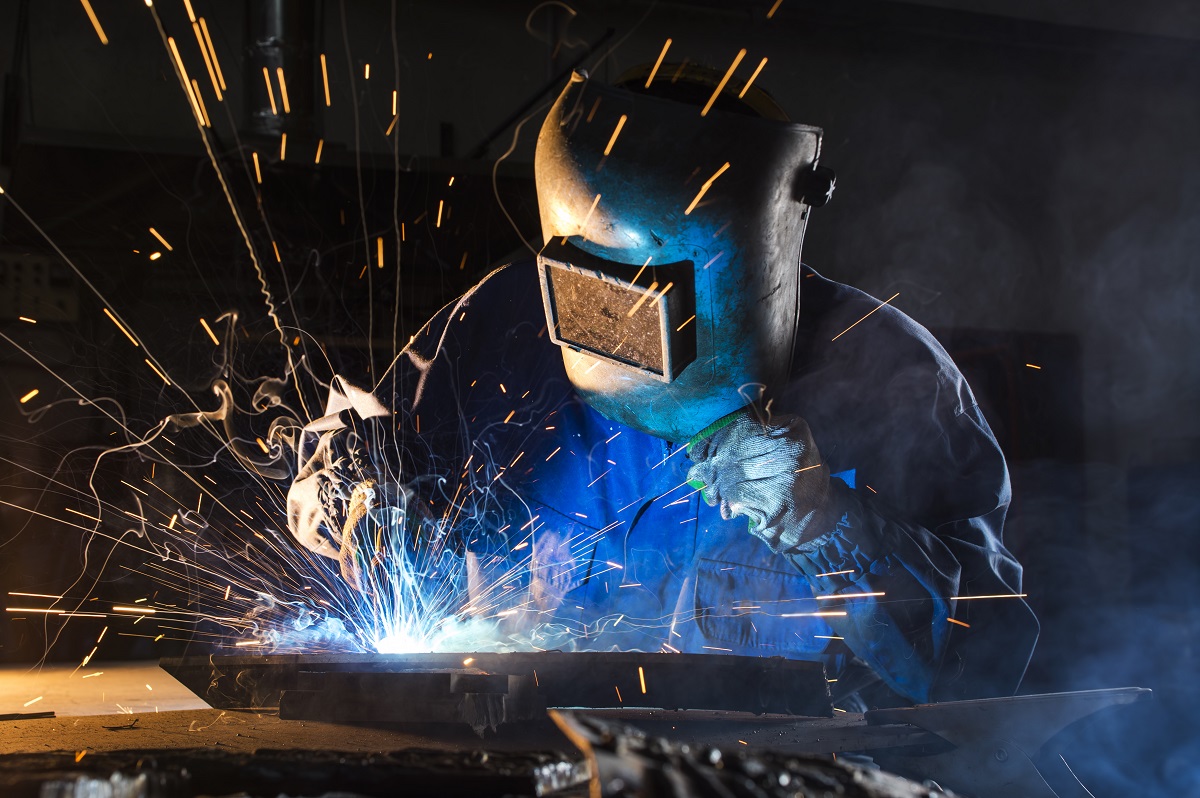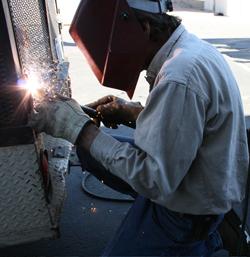All Regarding Welding: Trick Insights Into Techniques and Ideal Practices for Success
Welding encompasses a selection of strategies, each matched for details products and applications. Recognizing these approaches, such as GMAW, SMAW, and TIG, is essential for achieving optimal outcomes. Moreover, the ideal tools and safety techniques can not be forgotten. As prep work and troubleshooting play crucial duties in the welding process, mastering these aspects can greatly enhance the top quality of the last item. What are the crucial variables that assure an effective weld?
Recognizing Different Welding Techniques
Welding techniques incorporate a range of approaches, each fit to specific applications and products. Amongst the most usual methods are Gas Steel Arc Welding (GMAW), Protected Steel Arc Welding (SMAW), and Tungsten Inert Gas Welding (TIG) GMAW, additionally understood as MIG welding, is popular for its speed and flexibility, making it perfect for thin materials. SMAW, or stick welding, is preferred for its simplicity and efficiency in outside atmospheres, especially with thicker steels. TIG welding offers precision and control, making it ideal for elaborate work and non-ferrous steels (Montana Mobile Welding and Repair Fabrication). Each technique has its special advantages and factors to consider, permitting welders to select the very best approach based upon the task's demands, product kind, and preferred end results. Recognizing these techniques is essential for successful welding
Crucial Welding Equipment and Devices
While various welding methods call for specific abilities, the right devices and devices are just as important for accomplishing high quality results. Vital welding tools consists of welding machines, which differ relying on the strategy-- such as MIG, TIG, or stick welding. Safety gear, consisting of gloves, helmets, and aprons, warranties safety and security and comfort during the procedure. Furthermore, components and clamps assist protect products in location, making sure precision in welds. Consumables like welding poles, cable, and protecting gas are also crucial parts that influence the high quality of the weld. Additionally, tools such as cutters and mills assist in surface prep work and post-weld finishing, adding to an expert result. Purchasing top notch tools inevitably boosts the performance and performance of welding jobs.
Security Practices in Welding
Appropriate safety techniques are important in the welding industry to protect employees from potential threats. Welders must put on proper individual safety devices (PPE), consisting of headgears with correct shading, gloves, and flame-resistant clothes. Ample air flow is important to lower exposure to hazardous fumes and gases produced throughout the welding procedure. Furthermore, employees must be trained in the proper handling of welding tools to protect against accidents. Fire precaution, such as keeping flammable materials away from the welding location and having fire extinguishers easily available, are required. Normal examinations of equipment and work spaces can help identify potential hazards prior to they lead to mishaps. By adhering to these security techniques, welders can create a safer working atmosphere and decrease dangers related to their profession.
Preparing Materials for Welding
Preparing products for welding is an important action that significantly influences the high quality and honesty of the last item (Montana Mobile Welding and Repair Belgrade). Proper prep work entails cleaning the surfaces to get rid of pollutants such as dirt, oil, and corrosion, which can endanger the weld. Methods such as grinding, fining sand, or making use of solvents are frequently utilized to attain a tidy surface area. Additionally, guaranteeing that the materials mesh comfortably is vital; spaces can bring about weak welds. It's likewise vital to consider the alignment and positioning of the parts, as this will impact the ease of welding and the final end result. Ultimately, selecting the ideal filler material and ensuring compatibility with the base metals is crucial for achieving solid, long lasting welds
Tips for Getting High-Quality Welds
Accomplishing top quality welds calls for focus to information and adherence to finest techniques throughout the welding procedure. Correct joint prep work is essential, guaranteeing surface areas are cost-free and tidy from impurities. Selecting the appropriate filler material and welding technique based on the base metals is crucial for excellent bonding. Preserving constant traveling speed and angle while welding can promote and prevent flaws harmony. In addition, regulating warmth input is necessary; too much heat can bring about bending and weakened joints. Regularly examining the welds throughout the procedure enables instant adjustments if needed. Utilizing suitable post-weld therapies, such as cleansing and stress and anxiety relief, can improve the toughness and integrity of the weld, inevitably guaranteeing a successful result.
Fixing Common Welding Issues
Welding typically presents challenges that can influence the top quality and integrity of the last product. Usual issues such as porosity, inconsistent weld beads, and getting too hot can occur, each requiring details fixing methods. Comprehending these issues is important for welders to boost their abilities and achieve perfect results.
Porosity Troubles Described
Although porosity can usually be overlooked, it continues to be an important concern in welding that can endanger the stability of a completed product. Porosity refers to the presence of tiny combo welder gas pockets within the weld bead, which can weaken the joint and lead to early failure. This problem normally occurs from impurities, moisture, or inappropriate securing gas protection during the welding procedure. To minimize porosity, welders must validate that the base materials are clean and dry, utilize appropriate protecting gases, and maintain consistent welding criteria. Regularly inspecting the tools and environment can also aid identify prospective problems prior to they show up in the weld. Dealing with porosity effectively is important for attaining solid, long lasting welds that fulfill top quality requirements.

Irregular Weld Beans
Inconsistent weld beads can significantly impact the high quality and toughness of a completed product. Various variables add to this issue, consisting of inappropriate traveling speed, inaccurate amperage setups, and irregular electrode angles. When the welder moves too rapidly, a grain might appear slim and do not have penetration, while moving too gradually can create too much accumulation. Furthermore, making use of the wrong amperage can lead to either damaging or too much spatter, both of which concession weld stability. The welder's technique, such as inconsistent torch activity, can likewise cause uneven grain look. To reduce these issues, welders ought to concentrate on preserving steady, regulated activities and ensuring appropriate devices setups to achieve uniformity in their welds. Consistency is vital to achieving solid and dependable welds.
Overheating and Warping Issues
Excessive heat during the welding procedure can cause substantial getting too hot and warping issues, impacting the structural honesty of the workpiece. These issues typically manifest as distortion, which can endanger placement and fit-up, making further assembly testing. Aspects adding to overheating include the option of welding specifications, such as voltage and travel rate, as well as the sort of material being bonded. To minimize these problems, welders must preserve consistent traveling speed and projection welding appropriate heat input while checking the work surface temperature. Additionally, pre-heating or post-weld warmth therapy can assist relieve tensions brought on by fast air conditioning - Montana Mobile Welding and Repair Belgrade Welding. Regular assessment and adherence to best methods are necessary click this link in preventing getting too hot and making sure the longevity and reliability of bonded structures
Frequently Asked Concerns
What Are the Profession Opportunities in the Welding Sector?
The welding industry supplies diverse profession opportunities, consisting of positions as welders, inspectors, designers, and educators. Specialists can operate in manufacturing, building, aerospace, and vehicle sectors, taking advantage of strong need and competitive incomes in various functions.
Exactly How Can I Improve My Welding Speed Without Sacrificing Top Quality?
To enhance welding rate without giving up quality, one need to practice reliable methods, preserve tools, maximize setups, and enhance hand-eye coordination. Routine training and seeking responses can additionally considerably contribute to attaining faster, high-quality welds.
What Qualifications Are Readily Available for Welders?
Many qualifications exist for welders, including those from the American Welding Culture (AWS), the National Facility for Building Education And Learning and Research (NCCER), and various industry-specific organizations. These qualifications enhance employability and show ability proficiency.
Just How Does Welding Affect the Characteristics of Metals?
Welding affects the buildings of metals by changing their microstructure, which can result in changes in stamina, ductility, and firmness. Warmth input and air conditioning prices during the process considerably affect these material characteristics.
Can I Weld Dissimilar Metals Together?

Comments on “Everything you should know about overheating prevention from Montana Mobile Welding and Repair”